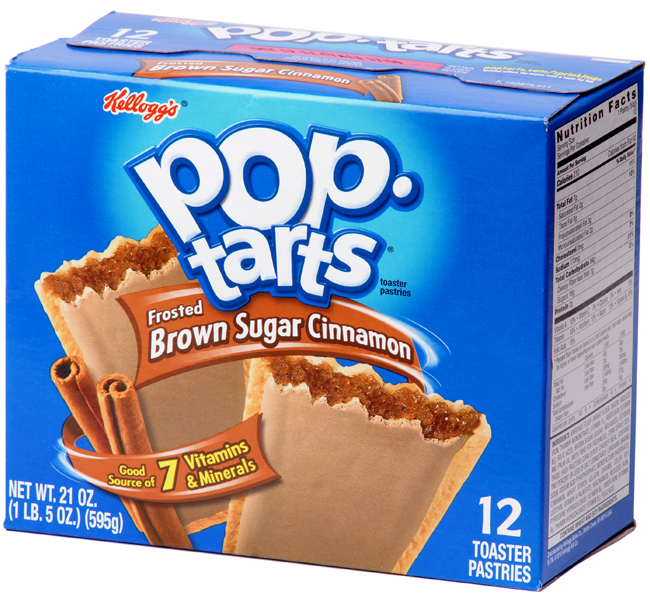Quite often I have found myself wondering how to most efficiently obtain the calories I need. For example, I am currently on a two day trip to Richmond Virginia for my internship with Capital One. Being deathly allergic to peanuts and sesame seeds I often find myself skip meals the rest of the interns can eat, while I search through vending machines, Mc Donald’s, places I know are relatively safe to eat. I currently have $20 in my pocket, two boxes of 12 Pop-Tarts (12 packages, at 400 calories a package), and I am trying to calculate the easiest way to obtain somewhere between 1800 – 2400 calories a day. Eating 5 packages of Pop-Tarts a day will achieve 2000 calories, so I am not to worried about this trip, but was there a better, cheaper (perhaps healthier) option?
Most articles/tables I find on the subject are attempting to analyze “healthiness” of vending machine food rather than pure cost per calorie, which I find far more useful. If I was trying to eat healthy I would not be eating out of a vending machine (usually I’m starving), so why bother analyzing healthiness, the greatest number of calories is what a starving man is worried about.
Limiting Factors
I am choosing to limit my search to the 50 most popular vending machine items, decided by the top google searches and the vending machines in the hotel I am in. In other words, it is fairly subjective, but it encompasses most of the items you will find in a vending machine in a U.S. airport. The majority of the nutrition for the various items was gathered via the company website(s), some calculations were occasionally performed[1][2]. When I could not find the information I often found various websites which have the information more or less copied from the wrapper[3].
Cost per Calorie
I had a rather small data set, however I took the pricing from the hotel, mall (near the hotel), and the air port. Adjusting the prices accordingly the pricing is rather consistent. Further, I adjusted the calorie count according to how many calories are burned per gram of protein, fat, and carb [4]:
I therefore have two columns, one for “raw calorie” which represents the companies assessment of how many calories are in their snack and the “adj calorie” representing the calculated values ([protein * 4 + Fat * 9 + Carb * 4] / cost).
As it turns out, Pop-Tarts are the highest calorie per cent at 4.22 calories per cent. The lowest calorie per cent are pretzels at 1.18 calories per cent, which makes it over three and a half times more expansive per calorie than Pop-Tarts.
What is interesting (to me) is that there are fairly clear trends in the data:
What it implies is that consumers are likely being over charged for items, especially items such as potato chips, which are cheap(ish) to produce and have many of the same basic ingredients as the hostess items (with fewer steps to produce). In other words, if you are worried about being “saving money” as opposed to “being healthy” you are better off buying items such as Pop-Tarts or Hostess Cakes. These sweet backed goods are very cheap compared to the “healthier” alternatives (i.e. Pop-Tarts provide more nutrients than pretzels), and if you go to a vending machine and do not know what to get, I suggest avoiding the salty items and sticking to the sweet.
Over the next couple of days I intend to write another article relating to fast food joints, so stay tuned!
Recent
Templating in Go
Building a Web Server in Go: Database Accesses
Are College Degrees Worth the Cost?
Using SVD to Obtain Regression Lines
Learning Through Blogging




I know this one! Gasoline! 31,000 calories to the gallon.
More seriously, non-vending machine wise, Google suggests that rice is number one, although bananas, surprisingly, can net you like 600 calories for a dollar. And the McDonald’s cheeseburger is like ~320 or something to a dollar.
You mentioned that you’re “usually starving,” so I think your true goal is not really getting your daily calorie allotment. It’s really about not feeling hungry. Hunger is distracting and uncomfortable, so of course you want to avoid it. It’s very important to note that not all calories are created equal in this respect. Foods with a high glycemic index (i.e. high in sugar and other carbohydrates) will not satisfy your hunger for long. They immediately spike your blood sugar but an hour later you’re hungry again. Unfortunately, almost everything in a vending machine has a high glycemic index, limiting your options.
So while 10 Pop-Tarts will cheaply fill your caloric intake, they’ll still leave you hungry most of the day. If you want to live cheap *and* not feel hungry, you have to take this into account. It’s too bad you’re allergic to peanuts, because they’re perfect for your goal. They’re cheap, often found in vending machines, have a high calorie density (high fat), and a very low glycemic index, so they keep you satisfied for a long time.
I usually will eat almonds, similar to peanuts in regard to the glycemic index, however they are way more expensive.
Either way, I agree with your assessment there is really no “good” option from a vending machine, that’s part of the reason I just ignored the glycemic index (it really was not worth the trouble). Further, as long as I have money in my bank account (currently at $24) I will make a really large dinner dish that will last me several days. Cost per calorie I can usually compete with Pop-tarts while at the same time being significantly healthier and keep me fuller longer.